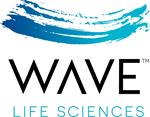WVE-120102 demonstrates statistically significant reduction in disease-causing mutant HTT protein in CSF vs. placebo
WVE-120102 demonstrates statistically significant reduction in disease-causing mutant HTT protein in CSF vs. placebo
No difference in total HTT protein or neurofilament light chain in treated patients vs. placebo
Additional cohort expected to initiate in January 2020
Wave to host investor conference call and webcast at 8:00 a.m. ET today
CAMBRIDGE, Mass., Dec. 30, 2019 (GLOBE NEWSWIRE) -- WAVE Life Sciences Ltd. (Nasdaq: WVE), a clinical-stage genetic medicines company committed to delivering life-changing treatments for people battling devastating diseases, today announced topline data from the ongoing Phase 1b/2a PRECISION-HD2 trial evaluating investigational therapy WVE-120102, designed to be the first allele-selective approach to treat Huntington’s disease (HD). In an analysis comparing all patients treated with multiple intrathecal doses of WVE-120102 to placebo, a statistically significant reduction of 12.4% (p<0.05) in mutant huntingtin (mHTT) protein was observed in cerebrospinal fluid (CSF). An analysis to assess a dose response across treatment groups (2, 4, 8 or 16 mg) suggested a statistically significant response in mHTT reduction at the highest doses tested (p=0.03). WVE-120102 was generally safe and well tolerated across all cohorts. These data support the addition of higher dose cohorts, and Wave expects to initiate a 32 mg cohort in January 2020.
“This topline analysis has given us the opportunity to evaluate early data from our ongoing dose finding study. The data demonstrate a reduction in mutant HTT and a safety and tolerability profile that supports exploration of higher doses of WVE-120102, with the goal of maximizing mutant HTT reduction and avoiding a negative impact on the healthy huntingtin protein,” said Michael Panzara, MD, MPH, Chief Medical Officer of Wave Life Sciences. “We plan to initiate the 32 mg cohort imminently and look forward to sharing data in the second half of 2020.”
WVE-120102 was developed as an allele-selective molecule, designed to preferentially lower mHTT protein by targeting single nucleotide polymorphism (SNP) rs362331 (SNP2) in order to keep the level of healthy or wild-type HTT (wtHTT) protein relatively intact. The wtHTT protein is important for neuronal function and may be neuroprotective in an adult brain. There is currently no assay available to directly measure wtHTT in the CSF; therefore, Wave is using an assay developed by CHDI Foundation, a not-for-profit biomedical research organization devoted to HD, to measure total HTT (tHTT) protein to indirectly assess effects on wtHTT. With this assay, a non-allele selective, pan-silencing approach would be expected to lead to a commensurate reduction in tHTT relative to mHTT.
While there was a statistically significant reduction in mHTT with WVE-120102 compared to placebo in the topline analysis, there was no difference in tHTT compared to placebo, suggesting WVE-120102 may have a potentially differential effect on huntingtin as measured by the mHTT and tHTT assays. Wave will continue to explore these potential effects with higher doses, where larger reductions of mHTT may be expected and where a more discernible impact on tHTT may be observed. Wave is continuing to work with CHDI Foundation and other research partners on methods to assess wtHTT protein preservation.
The topline analysis also assessed the presence of neurofilament light chain (NfL) in the CSF, and there was no difference in NfL between the WVE-120102 and placebo-treated groups. NfL is a protein component of the neuronal cytoskeleton. Its levels in the CSF are generally elevated when neurons are damaged in the setting of many neurological disorders, including HD.
WVE-120102 was generally safe and well tolerated among patients receiving doses up to 16 mg in both single and multidose portions of the study. A total of 72% of those who received WVE-120102 experienced an adverse event (AE) as compared with 83% on placebo, most of which were mild to moderate in intensity. The most common AEs (those occurring in at least 10% of patients on WVE-120102) were headache, procedural pain, falls and viral upper respiratory infection. There were no serious adverse events (SAEs) related to treatment with WVE-120102 and no study stopping rules were met, allowing dose escalation to continue. There were no notable changes in laboratory tests including liver or renal function tests, platelets or markers of immune activation.
PRECISION-HD2 is an ongoing, Phase 1b/2a multicenter, randomized, double-blind, placebo-controlled trial, which is evaluating the safety, tolerability, pharmacokinetics and pharmacodynamics of single and multiple doses of WVE-120102 in adult patients with early manifest HD who carry SNP2. The trial included both single and multidose portions where patients were randomized to either WVE-120102 or placebo and received up to four intrathecal doses. The trial was designed for patients to receive a single dose and then undergo a washout period of at least eight weeks before entering the multidose portion which includes three monthly doses. Forty-four patients (31 WVE-120102 and 13 placebo) participated in the multidose portion and data from 39 patients (27 WVE-120102 and 12 placebo) were available for mHTT assessment as of data cut-off. In October 2019, Wave initiated an open-label extension (OLE) study open to patients outside of the U.S. who participated in the Phase 1b/2a PRECISION-HD2 trial and dosing of patients in the OLE is ongoing.
Wave is also conducting the PRECISION-HD1 Phase 1b/2a trial assessing WVE-120101 in early manifest HD patients who carry SNP rs362307 (SNP1). PRECISION-HD1 includes four cohorts (2, 4, 8 or 16 mg intrathecal doses). Given the PRECISION-HD2 results, PRECISION-HD1 will remain blinded and Wave plans to add a 32 mg cohort. Topline results from PRECISION-HD1, including those from the 32 mg cohort, are now expected in the second half of 2020.
Investor Conference Call and Webcast
Wave management will host an investor conference call today at 8:00 a.m. ET to discuss these topline results. The conference call may be accessed by dialing (866) 220-8068 for participants based in the United States or +1 (470) 495-9153 for participants based outside the United States and entering conference ID 9594572. The live webcast may be accessed by visiting the investor relations section of the Wave Life Sciences corporate website at www.ir.wavelifesciences.com. Following the webcast, a replay will be available on the website.
About Huntington’s Disease
Huntington’s disease (HD) is a debilitating and ultimately fatal autosomal dominant neurological disorder, characterized by cognitive decline, psychiatric illness and chorea. HD causes nerve cells in the brain to deteriorate over time, affecting thinking ability, emotions and movement. HD is caused by an expanded cytosine-adenine-guanine (CAG) triplet repeat in the huntingtin (HTT) gene that results in production of mutant HTT (mHTT) protein. Accumulation of mutant HTT causes progressive loss of neurons in the brain. Wild-type, or healthy, HTT (wtHTT) protein is critical for neuronal function and suppression may have detrimental long-term consequences. Approximately 30,000 people in the United States have symptomatic HD and more than 200,000 others are at risk for inheriting the disease. There are currently no approved disease-modifying therapies available.
About WVE-120101 and WVE-120102
WVE-120101 and WVE-120102 are investigational stereopure antisense oligonucleotides designed to selectively target the mutant huntingtin (mHTT) mRNA transcript of SNP rs362307 (SNP1) and SNP rs362331 (SNP2), respectively. SNPs, or single nucleotide polymorphisms, are naturally occurring variations within a given genetic sequence and in certain instances can be used to distinguish between two related copies of a gene where only one is associated with the expression of a disease-causing protein.
In vitro studies in patient-derived cell lines have shown that WVE-120101 and WVE-120102 selectively reduce levels of mHTT mRNA transcript and protein, while leaving wild-type, or healthy, HTT mRNA transcript and protein relatively intact. The healthy transcript is required to produce wild-type HTT (wtHTT) protein, which is important for neuronal function, as evidenced by multiple preclinical studies indicating that long-term suppression of wtHTT protein may have detrimental consequences. Wave’s allele-specific approach may also enable the company to address the pre-manifest, or asymptomatic, HD patient population in the future.
About Wave Life Sciences
Wave Life Sciences (Nasdaq: WVE) is a clinical-stage genetic medicines company committed to delivering life-changing treatments for people battling devastating diseases. Wave aspires to develop best-in-class medicines across multiple therapeutic modalities using PRISM™, the company’s proprietary discovery and drug development platform that enables the precise design, optimization and production of stereopure oligonucleotides. Driven by a resolute sense of urgency, the Wave team is targeting a broad range of genetically defined diseases so that patients and families may realize a brighter future. To find out more, please visit www.wavelifesciences.com and follow Wave on Twitter @WaveLifeSci.
Forward-Looking Statements
This press release contains forward-looking statements concerning our goals, beliefs, expectations, strategies, objectives and plans, and other statements that are not necessarily based on historical facts, including statements regarding the following, among others: our commitment to advancing genetic medicines; our intent to add higher dose cohorts to PRECISION-HD2, including our plans to initiate a 32 mg cohort in January 2020 and to report that data in the second half of 2020; our intent to add higher dose cohorts to the Precision-HD1 trial, including a 32 mg cohort, and to report topline results from PRECISION-HD1, including those from the 32 mg cohort, in the second half of 2020; our ability to deliver on the promise of our current and future pipeline; the future performance and results of our programs in clinical trials and in preclinical development; and the benefit of nucleic acid therapeutics generally. Actual results may differ materially from those indicated by these forward-looking statements as a result of various important factors, including the following: our ability to finance our drug discovery and development efforts and to raise additional capital when needed; the ability of our preclinical programs to produce data sufficient to support our clinical trial applications and the timing thereof; our ability to continue to build and maintain the company infrastructure and personnel needed to achieve our goals; the clinical results of our programs, which may not support further development of product candidates; actions of regulatory agencies, which may affect the initiation, timing and progress of clinical trials; our effectiveness in managing future clinical trials and regulatory processes; the effectiveness of PRISM; the continued development and acceptance of oligonucleotides as a class of medicines; our ability to demonstrate the therapeutic benefits of our candidates in clinical trials, including our ability to develop candidates across multiple therapeutic modalities; our dependence on third parties, including contract research organizations, contract manufacturing organizations, collaborators and partners; our ability to manufacture or contract with third parties to manufacture drug material to support our programs and growth; our ability to obtain, maintain and protect intellectual property; our ability to enforce our patents against infringers and defend our patent portfolio against challenges from third parties; and competition from others developing therapies for similar uses, as well as the information under the caption “Risk Factors” contained in our most recent Annual Report on Form 10-K filed with the Securities and Exchange Commission (SEC) and in other filings we make with the SEC from time to time. We undertake no obligation to update the information contained in this press release to reflect subsequently occurring events or circumstances.
Investor Contact:
Kate Rausch
617-949-4827
krausch@wavelifesci.com
Media Contact:
Alicia Suter
617-949-4817
asuter@wavelifesci.com
Patient Contact:
Nikki Levy
617-475-7236
nlevy@wavelifesci.com





